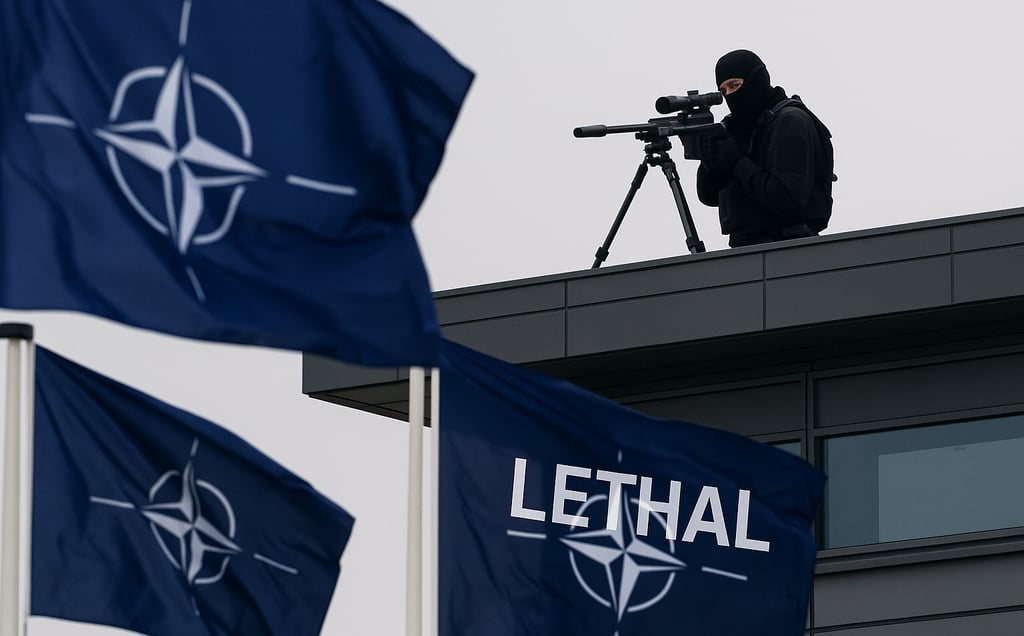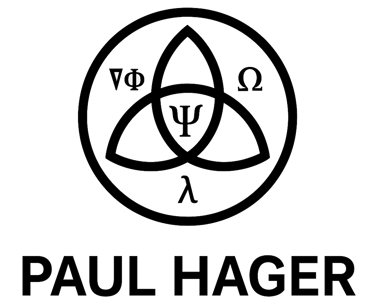The Irony of Safety – Why Leadership Is Not Direction
What does it mean when leaders must be protected from the people they claim to protect? In this incisive field-based essay, Trungpa’s radical insight into the Now, Ernest Becker’s theory of death denial, cutting-edge psychological research on hierarchy, and the Noöhedral field model converge to expose the deep irony behind the NATO summit in The Hague. A sharp analysis of power, fear, and why true safety can never be lethal.
POPULAR
Paul Hager
6/27/20253 min read


“A stronger, fairer and more lethal NATO to face a more dangerous world.”
Those were the exact words of Mark Rutte, newly appointed Secretary General of NATO, spoken during the summit in The Hague. Lethal. Not as a warning—but as a promise. And The Hague became a fortress. Airspace closed. Streets blocked. Hundreds of agents on rooftops and balconies. In two days, over 189 million euros were spent protecting a handful of individuals.
Not because they govern the world. But because they are at risk.
And that’s precisely the point.
The very people who are supposed to guarantee our safety need extraordinary protection themselves. Their physical vulnerability—and the need to shield them—is a mirror of a deeper truth, one that Chögyam Trungpa exposed decades ago: we are afraid of the Now. We cannot tolerate direct experience. So we build stories. Institutions. Security frameworks. We elect leaders, not to follow them, but to avoid carrying the weight of presence ourselves.
Trungpa didn’t talk about spirituality in mystical terms. He spoke of it as the raw, unmediated capacity to remain present. “Now is definitely now,” he said. “It is so powerful that we can’t face it.” So we run. Into religion. Into politics. Into belief systems. Into presidents. Into NATO. Into a lethal alliance disguised as protection. “Maybe that’s why we vote for the presidents,” Trungpa noted. “It is quite ironical. Very funny indeed.”
Ernest Becker dissected the psychological core of this irony. In The Denial of Death, he argued that nearly all human activity—culture, achievement, war—stems from an unconscious fear of death. We cannot accept our impermanence, so we construct systems that transcend us. Leaders become more than human. They become symbols of our need to survive.
And the more they must shield us from disorder, the more we must shield them from reality. From vulnerability. From doubt.
That’s where the Noöhedral perspective breaks the illusion. In field-theoretical terms, leaders do not generate direction (Ψ). They carry the projected incoherence of the collective. When a field loses direction, it externalizes orientation. That’s what hierarchy does: tension (∇Φ) rises while coherence (λ) drops. We stop looking for truth in ourselves and look to roles, functions, and titles. The leader stops being a person and becomes a symbolic fix-point. A protected position. A surrogate for presence.
And this is not just theory. The empirical study by Lammers et al. (2016), To Have Control Over or to Be Free From Others?, demonstrates exactly this dynamic. Across nine studies on three continents, they show that people do not seek power to influence others. They seek it to be free from the influence of others. What we truly want is autonomy—not dominance. And once autonomy is felt, the craving for power dissolves. Power, then, is not direction. It is compensation.
NATO promises safety through control. But from a field perspective, increased control without coherent direction only increases field tension. And tension without direction does not stabilize. It explodes. Hence the logic of “lethality.” Without coherence, protection becomes aggression. Security becomes threat. And leaders become targets—not of ideology, but of the unresolved field tension they’ve absorbed.
Which brings us to the paradox: the people we protect the most are those we believe protect us. But in truth, they are isolated. They are cut off from the field that projected onto them. The same Lammers study shows that as you ascend a hierarchy, social perception distorts. People at the top are no longer seen as fully human. Not biologically—but relationally. They are perceived as powerful but distant. Lacking empathy. Lacking resonance. Leadership becomes a field-isolated node: no circulation (Ω), no embodied direction.
That is why they must be secured. Their visibility is symbolically explosive. A single crack in their image is a crack in the mythos of control. So we deploy snipers. We silence the streets. We seal the sky. All to protect an illusion we fear to lose.
NATO isn’t a system of peace. It is a system of suspended coherence. A lethal formality that substitutes true resonance with escalating tension. And the tragedy is: no one feels safe. Not the public. Not the leaders. Not the soldiers.
Because safety isn’t external. It’s not a perimeter. It’s a state of field coherence—a projection of Ψ with real-time direction, structured tension, and responsive circulation. That doesn’t require presidents. It requires presence. It doesn’t call for private summits. It calls for public resonance. It doesn’t cost 189 million euros. It costs nothing—except the courage to be here.
The Noöhedral field reveals it plainly: power is not direction. Control is not coherence. And leadership means nothing if it doesn’t embody what is true. As long as we invest in structures that must grow deadlier to feel safer, we remain exactly where Trungpa left us: waiting to die. Instead of living now.
And maybe that’s why this article needs to exist. Because it is ironic. And that makes it real.
